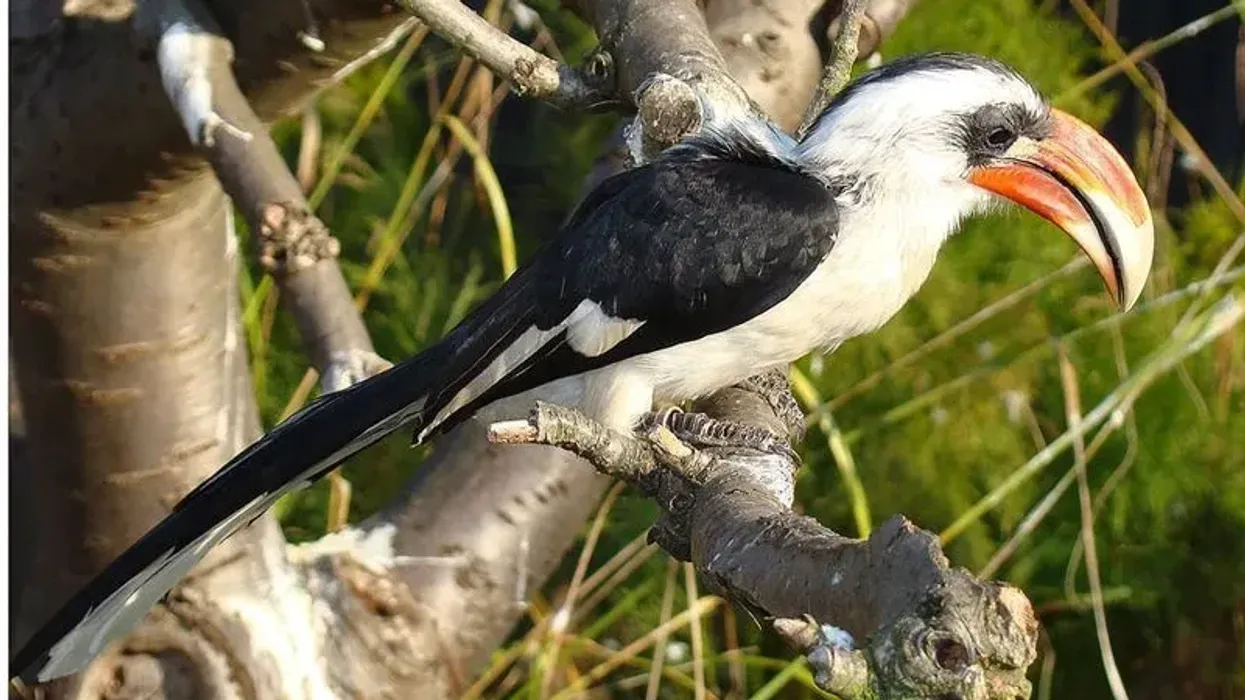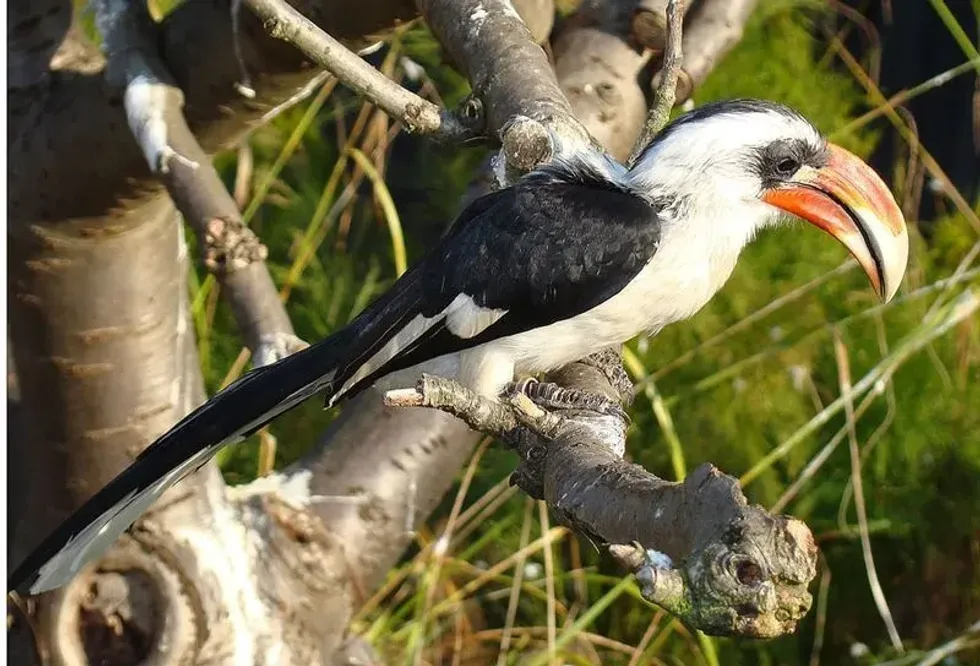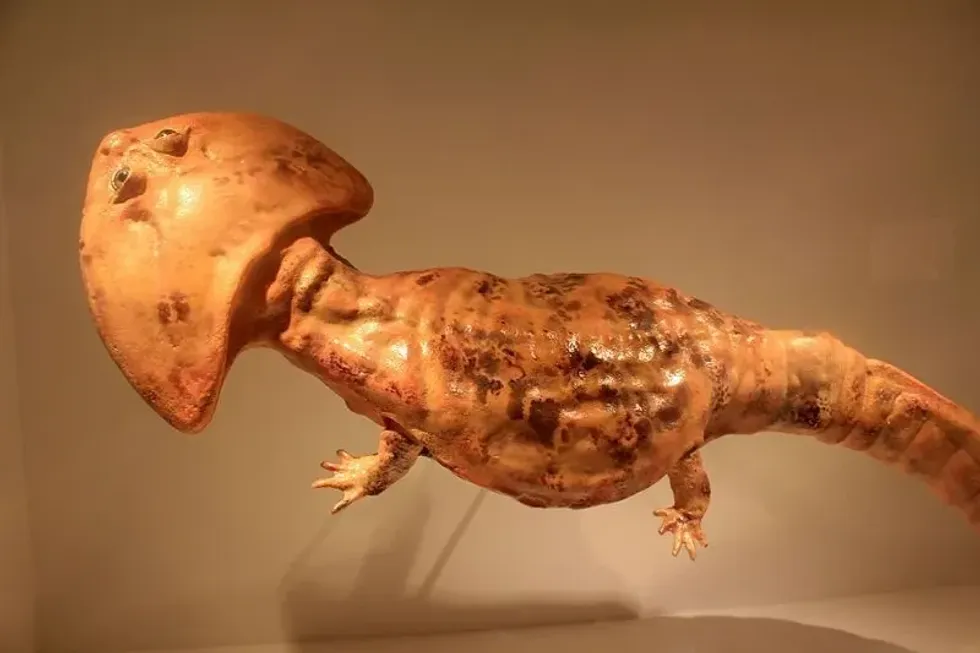The hornbill is a unique and fascinating tropical bird belonging to the family Bucerotidae and is found in Africa, Asia, and Melanesia.
Larger than most other forest birds, a hornbill has a flashy appearance with an oversized and brightly colored beak. The species was described by Constantine Samuel Rafinesque, a French polymath, botanist, and zoologist.
This article will tell you everything you need to know about a special species belonging to this colorful bird family including details about the food items that make up its primary diet, similar species, distribution, range, characteristics of its nest, breeding, and nesting habits!
The Von der Decken's hornbill (Tockus deckeni) is a beautiful bird native to eastern Africa.
It primarily inhabits regions in the East African Rift, Ethiopia, and south Tanzania. The requirements for their habitats are quite unique as, unlike most birds, they prefer living in thorny, scrubby, dry, and arid regions.
The species was first introduced and described by Jean Louis Cabanis, a German ornithologist in 1869, who named them after the German explorer Baron Karl Klaus von der Decken.
This species is a small-sized hornbill with dark gray, almost black upperparts, and off-white underparts, a fairly large head, a long tail, and a long curved bill that lacks a casque which is present among other hornbill species.
These hornbills are similar to the red-billed hornbill, except for the bill color, as the female of this species has a black bill, whereas the male has a red and ivory two-tone with a cream tip, and a black edge, and lesser spots on their wings. They are monogamous and migrate short distances during the breeding season.
Female hornbills lay about two eggs in a single clutch, followed by 30-45 days of incubation, the female leaves the nest only after her chicks are ready to fledge.
Read on to find out more about their life span, physical characteristics, communication, and conservation status! Learn about some other birds from our rhinoceros hornbill facts and great hornbill facts pages.
Von Der Decken's Hornbill Interesting Facts
What type of animal is a Von Der Decken's hornbill?
The Von Der Decken's hornbill (Tockus deckeni) is a bird named after Baron Karl Klaus von der Decken and it belongs to the Animalia kingdom.
What class of animal does a Von Der Decken's hornbill belong to?
The Von Der Decken's hornbill (Tockus deckeni) belongs to the Aves class.
How many Von Der Decken's hornbills are there in the world?
Accurate data about their population size is unknown. However, their conservation status is Least Concern, confirming that the population is stable.
Where does a Von Der Decken's hornbill live?
The Von Der Decken's hornbill (Tockus deckeni) distribution occurs in eastern Africa, from central and eastern Tanzania, throughout Kenya, and into southeastern Ethiopia and Somalia.
What is a Von Der Decken's hornbill's habitat?
These hornbills prefer living in open bush and scrubby woodlands of the dry savanna and arid steppe. They build their nests inside tree cavities and block the entrances, except a small portion, with mud, droppings, and other materials for the entire breeding season.
They temporarily migrate to different altitudes or regions with temperate climatic conditions and dense vegetation during the breeding season.
Who do Von Der Decken's hornbill live with?
Von Der Decken's hornbills live in pairs or small-sized groups.
How long does a Von Der Decken's hornbill live?
Von Der Decken's hornbills have an average life span of around 20 years in the wild.
How do they reproduce?
These hornbills form monogamous pairs and nest in tree cavities.
The pair works together to partially close up the entrance of the cavity, where their nest lies, with a mixture of mud, droppings, and food items such as fruit pulp until there is only one narrow hole, big enough for the male to transfer food to the mother and chicks.
This is done to increase the survival rate and to keep the young ones safe from predators like snakes.
A female Von Der Decken's hornbill lays two or three white eggs and leaves the nest only when her chicks are ready to fledge or they become too big for the nest. Both parents feed and look after the chicks.
What is their conservation status?
The IUCN Red List of Threatened Species has classified the Von Der Decken's hornbill (Tockus deckeni) as a Least Concern species.
Von Der Decken's Hornbill Fun Facts
What do Von Der Decken's hornbill look like?
This species bares an uncanny resemblance to the red-billed hornbill but can be separated by the different colored bills. Both sexes of this species have black, brown, gray, and white plumage, long feathers, long tails, and large circular eyes.
Female hornbills have a black bill, whereas male hornbills have a red and ivory two-tone bill with a pale brown, or cream tip, and a sharp black cutting edge. Females are slightly smaller, shorter, and weigh less compared to males.
Neither the male bird nor the female bird has a casque on its bill, which is prominent among other species of hornbills.
A casque is a hollow outgrowth on the top of the mandible of the bill made of keratin, appearing almost wood-like with intricate patterns. The long bill of this species is adapted to their foraging and feeding habits and helps them collect food items.

How cute are they?
This hornbill looks fierce because of its prominent bill and large, round eyes, but some people may consider this bird cute because of its striking red-orange, or black bill, and engrossing behavior.
How do they communicate?
They use different kinds of calls for communication that range from deep booms to toots, cackles, bellows, and brays. The casque apparently acts as a vibrating chamber to make their voice more powerful, and unlike other species, these birds lack casque on their bills and are not as loud.
How big is a Von Der Decken's hornbill?
Male hornbills of this species can grow up to a length of 2 ft (60 cm), whereas female birds can grow up to 1.7 ft (53 cm).
An ostrich is nearly five times the size of this species.
How fast can a Von Der Decken's hornbill fly?
The accurate speed rate of this species is unknown. However, they have an impressive wingspan and can fly swiftly.
How much does a Von Der Decken's hornbill weigh?
An adult Von Der Decken's hornbill weighs around 5.1 -6.9 oz (145-195 g). They are two times lighter than the rock dove.
What are the male and female names of the species?
There as no specific names for the male and female members of this species. They are simply denoted as males and females.
What would you call a baby Von Der Decken's hornbill?
Young baby hornbills are called chicks.
What do they eat?
The Von Der Decken's hornbill is omnivorous and its diet is made up of a variety of food items including insects, fruit, and seeds. It feeds mainly on the ground and will form flocks outside the breeding season.
They also eat fruits like papayas, cantaloupes, blueberries, bananas, and apples. Some of their favorite foods include crickets, mealworms, and small rodents.
Juvenile hornbills are often prey upon by the crowned eagle.
Are they dangerous?
No, these birds are fairly shy and do not interact with humans much. If they detect a human's presence, they simply take off and move to another place.
Would they make a good pet?
No, since these birds are wild they would not make good pets. They are best left to live in the wild with their kind. You can always observe them in their natural habitat or at conservation zoos!
Did you know...
The Jackson's hornbill is often treated as a subspecies of it.
The price of hornbills can vary according to the seller, appearance, and health.
Karl Klaus von der Decken (after who the species is named) was the first European to attempt to climb Mount Kilimanjaro.
Do Von Der Decken's hornbill migrate?
Yes, these birds temporarily migrate a short while before the breeding season begins.
How many eggs do Von Der Decken's hornbill lay?
Female Von Der Decken's hornbills lay two eggs in a single clutch during the breeding season.
Here at Kidadl, we have carefully created lots of interesting family-friendly animal facts for everyone to discover! Learn more about some other birds from our snow goose fun facts or saker falcon interesting facts pages.
You can even occupy yourself at home by coloring in one of our free printable Von Der Decken's hornbill coloring pages.
Main image by Dick Culbert
Second image by Frank Wouters









